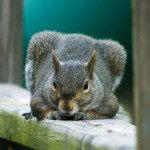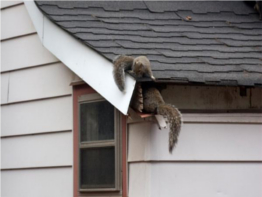The Life Cycle of the Urban Gray Squirrel

Due to the increasing human population in urban centers and sometimes consequential deforestation there has arisen the crisis of wildlife habitat. The following article mainly captures the life of the Eastern Gray Squirrel, scientifically known as Sciurus carolinensis.
Normally, as the name suggests, most gray squirrels are predominantly gray in color, although some variations of white and black one may occur. Sometimes the squirrel may look browner in color due to the rust red and black hairs found in the fur covering the head, back and sides. The chin, belly and throat are however white. The gray squirrel is most distinguished by its bushy tail, whose length can vary from about six and a half to nine and a half inches.
The life cycle
On average the gray squirrel reaches sexual maturity at about eight to eleven months. The breeding periods occur in January and June every year. The female gray squirrel produces a litter of two to four young ones after every forty or forty five days. This takes place from early spring till July. Upon birth the young ones are blind, naked and helpless and it takes between eight to ten weeks to wean them. The young ones often remain with their mother until she has her second litter, although they are able to fend for themselves by the time they are fifteen weeks old. They even have been known to stay with their mother throughout the winter period if born during summer.
The survival of the gray squirrel largely depends on food availability; statistics show that in a good food year, up to two fifths of female gray squirrels produce second litters. On the other hand, in a poor food year, almost none of them produce a second litter. On average, gray squirrels have an expectancy of one or two years, although the male ones may live up to nine years and the female ones twelve years. On a yearly basis, the death rate for adult gray squirrels is fifty percent and seventy five percent for the young ones.
However, due to hunting for sport and poaching, the death rate has risen drastically over the years. It is crucial to protect the lives of these animals to avoid extinction and hence natural imbalance.




